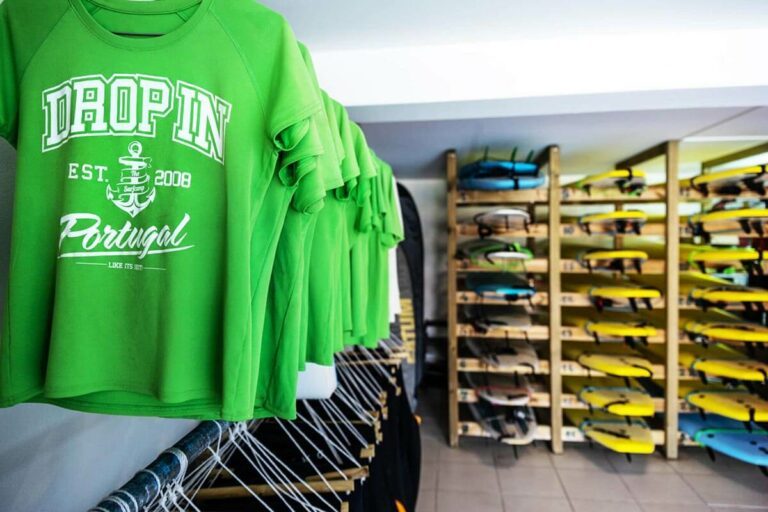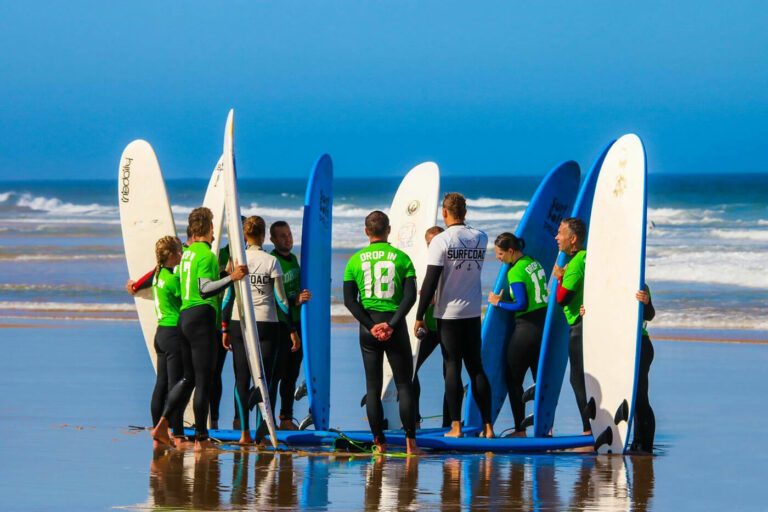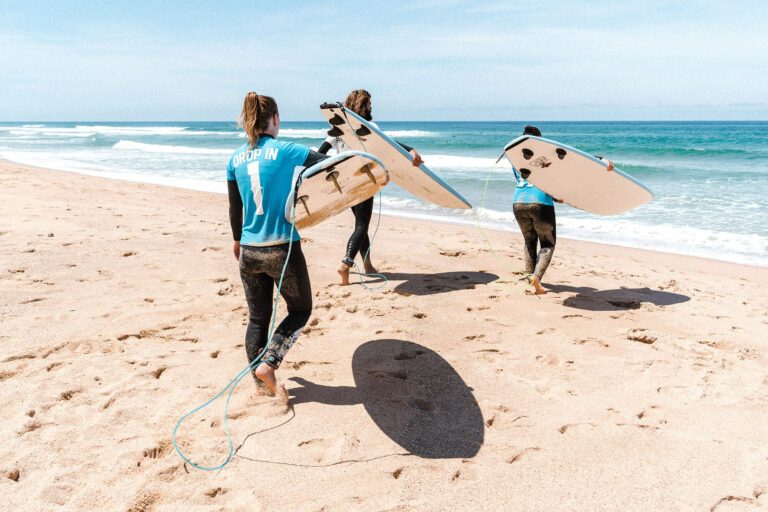
The wetsuit for surfing
The wetsuit
Wetsuit is the English name for a wetsuit for surfing. There are now hundreds of different companies, designs, colors, thicknesses, etc.
For surfing, however, you should use special surf suits, as they are optimized for the movement of surfing – for example, they have very stretchy material on the shoulders to facilitate the paddle. It is important that the suit always fits exactly and does not wrinkle.
We only use high quality wetsuits from Rip Curl, Quiksilver and Ocean&Earth at our camp.
HOW DOES A WETSUIT WORK?
Neoprene is a very stretchy and thermally insulating material. On the one hand, the neoprene prevents the body heat from being dissipated to the outside – and on the other hand, it prevents the cooler outside temperatures from water and air from reaching your body. Depending on the thickness and type of neoprene, significant differences can be noticed.
Insulation is achieved by heating the penetrating water – i.e. the suit fills with water and the body heat warms the water in the suit, which now no longer reaches the outside. Therefore, it is important that the suit is not too big, so that there is only a thin layer of water between the body and the suit.
The neoprene thickness is always specified in millimeters. We usually talk about 3/2s or 4/3s – this means that the suit is 3mm or 4mm thick on the upper body and 2mm or 3mm thick on the arms and legs.
WHICH SUIT?
The wetsuits depends on the temperature of water and air. From about 25° you don’t need a neo. Basically, you can say that the colder the environment, the thicker the neo should be. In itself, however, the water temperature is decisive for the choice of neoprene.
Shorties and neoprene shirts are models for warm to tropical spots. While the neoprene shirts warm only the upper body, shorties are normal wetsuits with short sleeves and legs.
Longsleeve shorties and short sleeve steamers are also called jumpsuits and offer a little more insulation against cooler temperatures still warm regions.
The fullsuit, often called a steamer, is used in cooler temperatures. It has long sleeves and legs and provides constant warm temperatures all over the body. Depending on the temperature, there are suits from 3/2mm to 5/4mm. The seams are mostly blind stitched and taped so that water does not penetrate.
For us, we usually always use 3/2s (April-October) or 4/3s (November-March), as the Atlantic has a tempertaur between 16-20 degrees. On very warm summer days, however, you can also go into the water without a wetsuit.


